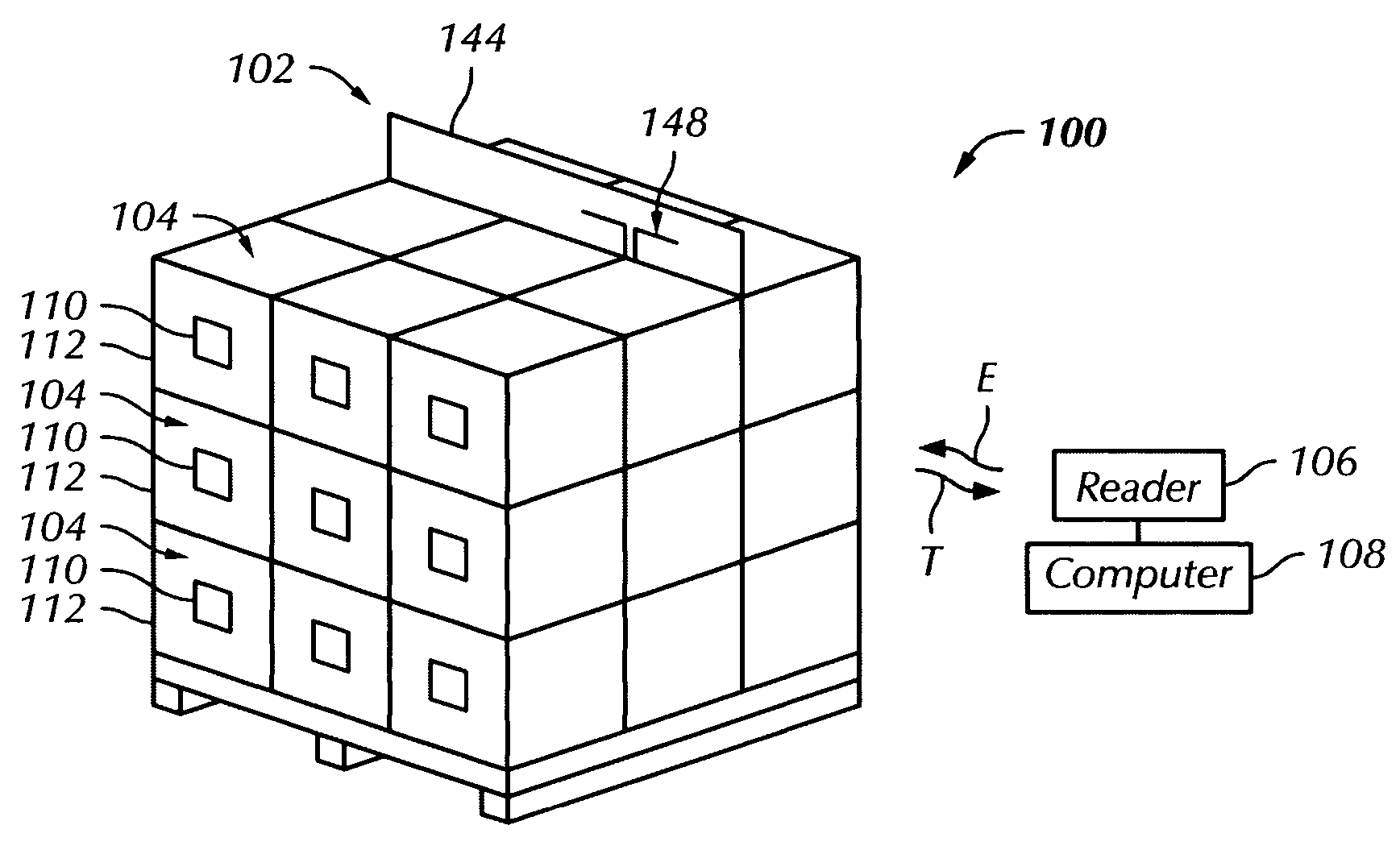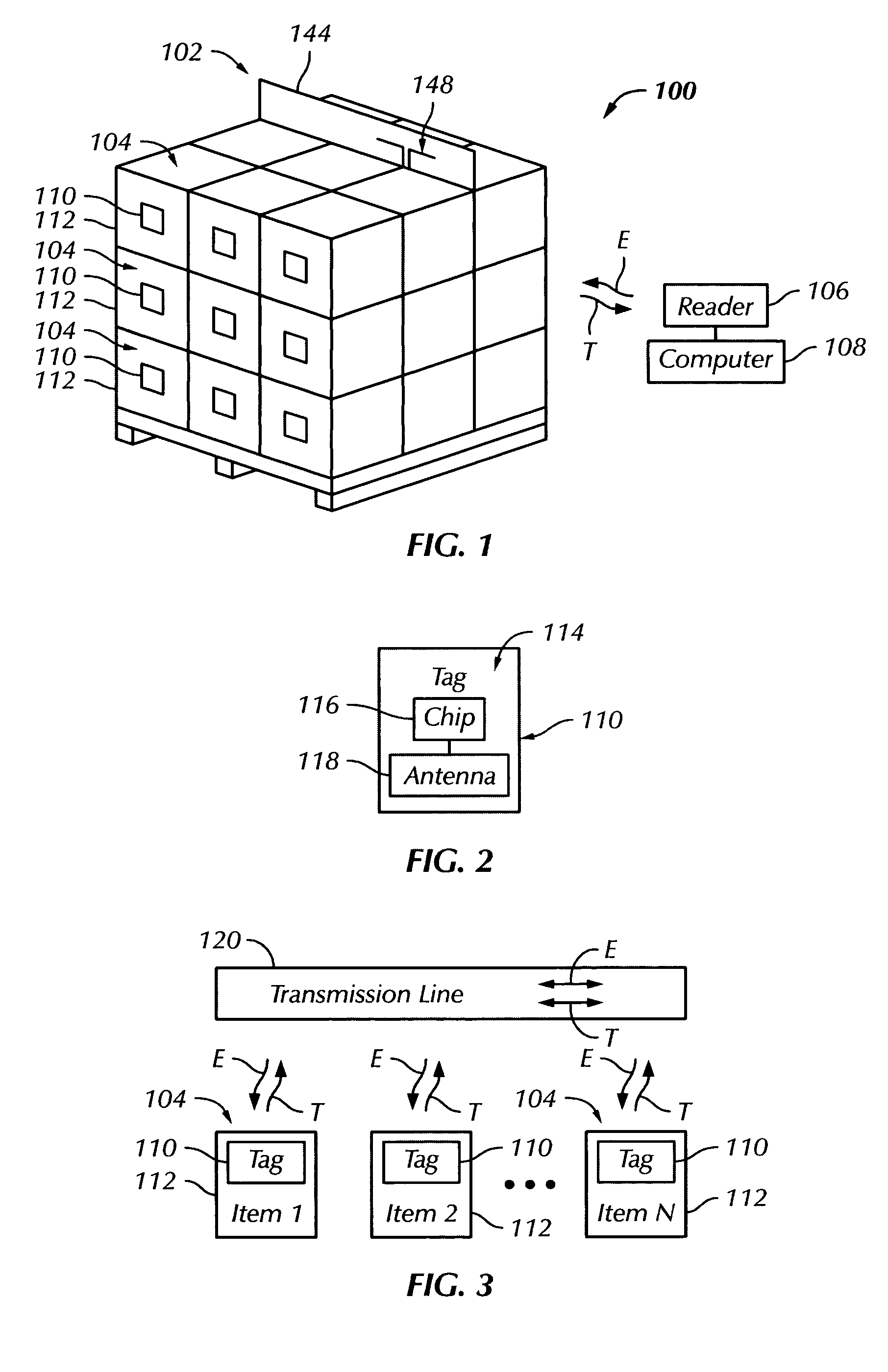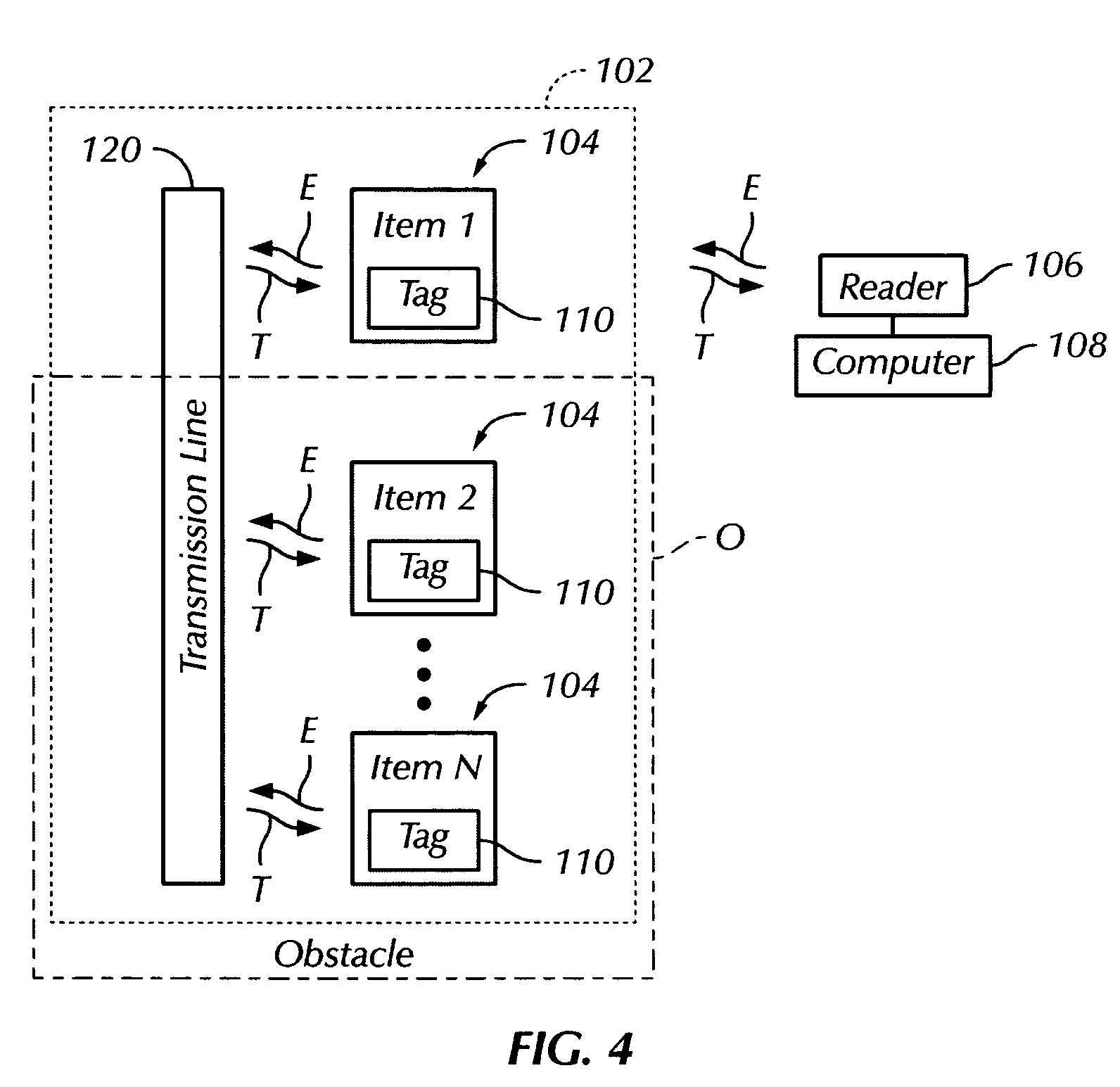RFID devices for enabling reading of non-line-of-sight items
a technology of rfid tags and items, applied in the direction of burglar alarm mechanical actuation, instruments, transportation and packaging, etc., can solve the problems of impaired effective reading of tags located in the center of stacks, difficult to read stacks of items with rfid tags, and difficult to track metal products or those with high water content, etc., to achieve effective reading effect of the reader
- Summary
- Abstract
- Description
- Claims
- Application Information
AI Technical Summary
Benefits of technology
Problems solved by technology
Method used
Image
Examples
Embodiment Construction
[0034] Referring more particularly to FIG. 1 of the drawings, a radio-frequency identification (RFID) system 100 enables the performance of a 100% read of a palletized load 102 that includes a plurality of RFID-tagged items 104 such as an object, box, carton, case, bottle, container, drum, or the like. In a number of embodiments, the system 100 may include a reader or interrogator 106 and a computer 108. The reader 106 transmits and receives radio-frequency (RF) energy to and from the load 102, and passes information associated with the load 102 and carried by the energy received from the load to the computer 108. The computer 108 in turn may be connected to, for example, a network, an output device, and / or a database for further processing of the information.
[0035] The system 100 includes a plurality of RFID tags 110 that are respectively mounted to each of a plurality of items 112. Each of the tags 110 includes an RFID circuit 114 that, in turn, may include a chip 116 operatively...
PUM
 Login to View More
Login to View More Abstract
Description
Claims
Application Information
 Login to View More
Login to View More - R&D
- Intellectual Property
- Life Sciences
- Materials
- Tech Scout
- Unparalleled Data Quality
- Higher Quality Content
- 60% Fewer Hallucinations
Browse by: Latest US Patents, China's latest patents, Technical Efficacy Thesaurus, Application Domain, Technology Topic, Popular Technical Reports.
© 2025 PatSnap. All rights reserved.Legal|Privacy policy|Modern Slavery Act Transparency Statement|Sitemap|About US| Contact US: help@patsnap.com



